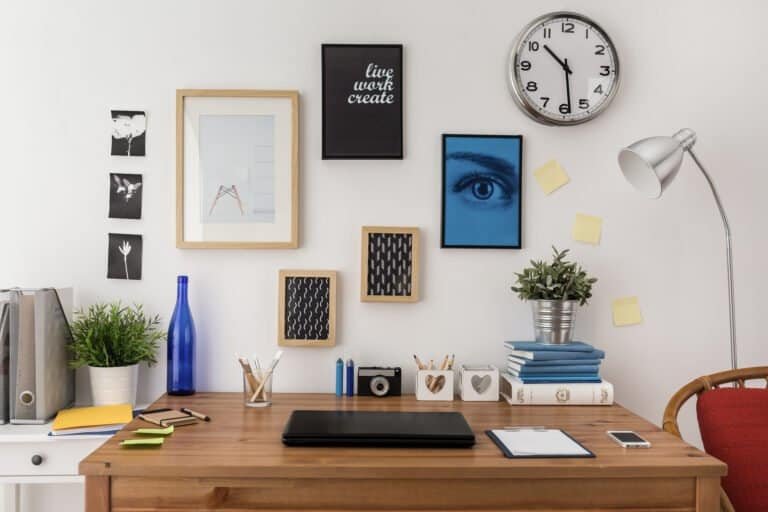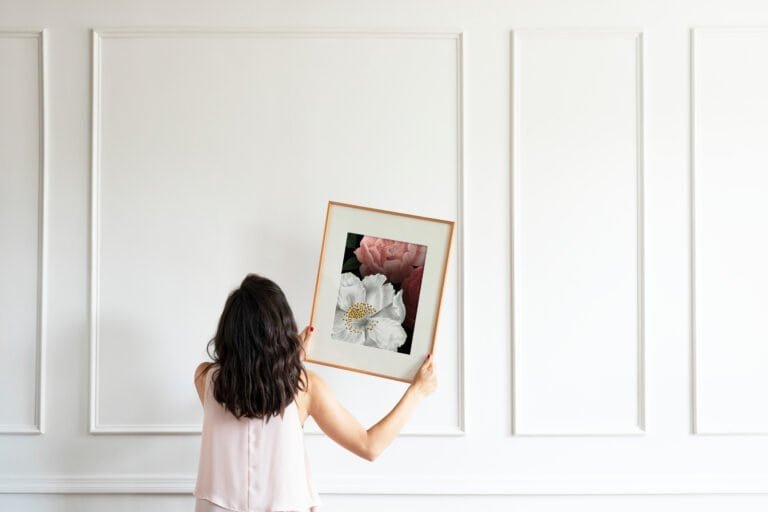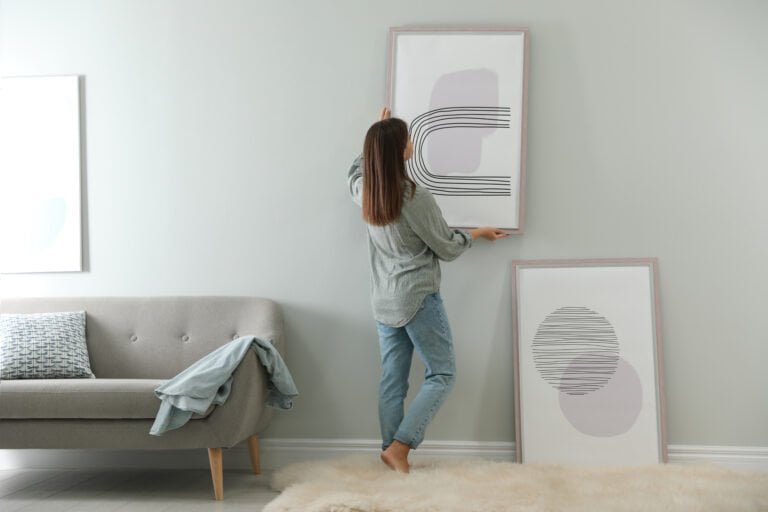Framing with the Seasons: How to Rotate Art for a Fresh Look All Year Round
Changing your home’s look doesn’t need to be expensive or time-consuming. One of the simplest and most effective ways to keep your space feeling fresh is by updating your framed art and photos to reflect the current season. This small change can transform a room’s atmosphere without requiring a complete decor overhaul.
Creating a collection of seasonal artwork that can be rotated throughout the year allows homeowners to enjoy different colors, themes, and moods as the seasons change. Many design enthusiasts are embracing the concept of seasonal gallery walls – a layout of frames where the artwork switches based on the season or holiday. This approach keeps spaces feeling current and prevents decor fatigue.

The beauty of seasonal art rotation lies in its flexibility. From the soft pastels of spring to the rich, warm tones of autumn, rotating canvas prints lets people enjoy seasonal vibes without purchasing new furniture or repainting walls. Anyone can create an evolving art collection, even on a budget, with creative solutions available at various price points.
Understanding Art Rotation
Rotating wall art creates visual renewal in your living space without requiring a major redesign. This practice offers both psychological benefits and practical advantages for homeowners who want to maximize their art collections.
Benefits of Rotating Your Art
Rotating seasonal art allows homeowners to enjoy their entire collection rather than relegating pieces to storage. This approach maximizes the value of your investment in original art while keeping spaces feeling fresh.
Financial benefits are significant. Instead of purchasing new decor for each season, you can utilize pieces you already own in different contexts and configurations.
Rotation also protects valuable artwork from environmental damage. Pieces susceptible to fading from direct sunlight can be moved to less exposed locations periodically.
Seasonal wall updates help celebrate the passage of time and mark special occasions throughout the year without permanent decor changes.
The Psychology of Change and Visual Interest
Humans naturally respond to environmental variety. When wall art remains static for too long, our brains begin to filter it out through a process called visual adaptation.
Rotating artwork creates renewed visual interest as our perception systems engage with “new” stimuli. This refreshed attention can positively impact mood and cognitive function.
Canvas rotation provides mental stimulation while maintaining the comfort of familiar surroundings. This balance satisfies both our need for novelty and our desire for stability.
Color psychology plays an important role too. Warm autumn tones can create coziness during colder months, while bright spring colors can energize spaces when emerging from winter.
Seasonal Themes and Their Influence
The colors and motifs of each season provide natural inspiration for rotating your art displays. These seasonal themes can transform your living space and reflect the world outside your windows.

Capturing the Essence of Each Season
Spring art typically features rebirth and renewal. Floral prints in soft pastels like pink, yellow, and lavender bring nature’s awakening indoors. Consider botanical illustrations or landscapes with blooming trees.
Summer artwork often highlights vibrant energy. Beach scenes, tropical motifs, and bright sunsets create a carefree atmosphere. Watercolor paintings of summer activities or abstract pieces with bold colors work well here.
Fall decor embraces warmth and harvest. Rich oranges, deep reds, and golden yellows dominate autumn-themed art. Landscape photography featuring changing leaves or still life paintings with pumpkins and gourds add seasonal charm.
Winter art focuses on serenity and celebration. Snowy landscapes, holiday traditions, and cozy indoor scenes create a sense of warmth during cold months. Black and white photography or minimalist art with silver and blue tones works beautifully.
Color Palette Considerations
Each season has its distinctive color scheme that can guide your seasonal décor choices:
- Spring: Soft pastels and fresh greens
- Summer: Ocean blues, turquoise, bright yellows, tropical greens
- Fall: Burnt orange, olive green, burgundy, and earthy tones
- Winter: Cool blues, silvers, classic red and green, white and cream
Switching wall art according to these color considerations helps mark the passage of time and celebrates each season’s unique characteristics.
Creating a Gallery Wall
A gallery wall serves as your home’s visual centerpiece for seasonal art rotation. This versatile display solution allows you to showcase different pieces throughout the year while maintaining a cohesive look.
Layout and Composition
Start by selecting a focal wall in a high-traffic area of your home. The largest piece typically works best as the center anchor point, with smaller frames arranged around it to create a balanced shape. Many designers start with the largest piece in the middle and work outward.
Before hanging anything, arrange your frames on the floor to experiment with spacing and composition. This prevents unnecessary wall damage and helps visualize the final result.
Consider using a paper template system: trace each frame onto kraft paper, label it, and tape the templates to the wall. This method allows for easy adjustments before committing to nail placement.
Leave 2-3 inches between frames for a classic look or 1-2 inches for a more compact, contemporary feel. Uniform spacing creates visual harmony even when displaying diverse art styles.

Mixing Styles and Mediums
A dynamic gallery wall incorporates various art forms – from prints and paintings to photography and textile art. This diversity adds visual interest and makes seasonal swapping easier.
Consider including original art from an Etsy shop alongside family photos or vintage finds. The contrast between professional pieces and personal mementos creates depth and personality.
Frame selection matters tremendously. Use a mix of frame styles while maintaining some consistency through color, material, or thickness. For example, combine black frames of different widths or mix wood tones within the same color family.
Chunky, matted frames work well for seasonal rotation as they create visual weight and make artwork swapping straightforward. Consider investing in quality frames with easy-open backs for hassle-free seasonal changes.
Seasonal Art Selection Tips
Spring Art Ideas
- Botanical illustrations and floral prints
- Watercolors with soft pastels (pink, yellow, lavender)
- Landscapes with meadows and gardens
- Scenes showing visible growth or new life
Summer Art Choices
- Beach scenes and coastal landscapes
- Artwork featuring water elements
- Abstract pieces with warm, vibrant tones
- Sunflowers, tropical flora, and outdoor activities
Fall Artwork Selection
- Rich, earthy colors (oranges, reds, browns, yellows)
- Landscapes with forests and changing leaves
- Still life paintings with harvest themes
- Textured techniques that add warmth and depth
Winter Art Considerations
- Limited palette with whites, blues, grays, and silver
- Snow-covered landscapes and serene winter scenes
- Abstract pieces with cool tones and minimal compositions
- Cozy interiors or night sky imagery
Complementing Decor and Furniture
Your art rotation strategy works best when it harmonizes with your existing home elements. Thoughtful placement creates visual balance that enhances both the artwork and your living space.
Harmonizing Art with Room Decor
Seasonal color schemes provide perfect opportunities to refresh your art display. Choose artwork that picks up accent colors in your seasonal decorating elements.
Textiles play a crucial role in this harmony. Interchangeable cushion covers in seasonal colors create cohesion between your art and room decor.
Accentuating Art with Furniture

Position artwork to create conversation with your furniture arrangements. A large piece centered above a sofa anchors the room, while smaller frames work well beside reading chairs.
Consider the height relationship between furniture and art:
- Low furniture: Hang art lower to create visual connection
- Tall bookcases: Display complementary art pieces on shelves
- Side tables: Perfect for seasonal tabletop frames
Moving furniture positions seasonally creates fresh perspectives for existing art. Rearranging a chair to face a newly hung piece draws attention to both elements.
Use lighting thoughtfully. Adjustable fixtures highlight winter’s darker artwork, while summer pieces benefit from natural light placement.
Accessorizing with Seasonal Elements
Accessorizing your framed art with complementary seasonal elements creates cohesive displays that reflect the changing seasons and enhance your home’s aesthetic appeal throughout the year.
Incorporating Decorative Accents
Glassware offers versatility across seasons while maintaining visual interest near your framed artwork. Clear glass vases with spring blossoms bring freshness to botanical prints, while amber-tinted vessels complement autumn landscape paintings.
Brass accents provide year-round elegance with their warm metallic tones. These fixtures work particularly well with winter-themed art, creating a cozy atmosphere when paired with darker frames and seasonal photography.
Switching up small elements like glassware arrangements can refresh a space without requiring a complete redesign.
Adjusting for Events and Festivities
Religious seasons and holidays offer opportunities to adjust your art displays meaningfully. Holiday-specific decorations can transform your art displays with minimal effort:
- Valentine’s Day: Add small heart ornaments near romantic artwork
- Independence Day: Place small flags or blue/red accents by historical prints
- Thanksgiving: Surround harvest paintings with miniature gourds or wheat stalks
Reflecting the current season through these modifications helps create a harmonious transition between indoor décor and the external environment.
Care and Maintenance of Artwork
Proper care of your framed artwork ensures it remains beautiful for years to come. Taking the time to handle, store, and clean your pieces correctly preserves both the art and its framing.
Proper Handling and Storage
Always handle artwork with clean, dry hands or wear cotton gloves to prevent oils from your skin damaging the piece. When moving framed art, carry it with two hands by the sides of the frame rather than by the hanging wire or top edge.
For seasonal rotation, store unused pieces in a climate-controlled environment. Extreme temperatures and humidity can damage both art and frames.
Stack framed pieces vertically rather than horizontally, with acid-free paper or cardboard between them. Never store artwork in attics, basements, or garages where temperature fluctuations occur.
Cleaning Techniques
Different framing materials require specific cleaning approaches:
- For glass-fronted frames, use a microfiber cloth slightly dampened with a mixture of water and mild soap
- For acrylic or plexiglass coverings, use only specialized acrylic cleaners and soft cloths
- Wooden frames benefit from gentle dusting with a soft brush or microfiber cloth
- Metal frames require only occasional dusting
Remember that protection of your artwork should be your primary concern when handling and cleaning framed pieces.
Sourcing and Purchasing Art
Building a rotating art collection requires knowing where to find pieces that speak to you and fit your budget. The art market offers options ranging from affordable prints to one-of-a-kind originals that can transform your seasonal displays.
Finding Unique Pieces on Etsy
Etsy has revolutionized how we discover art from independent creators worldwide. The platform hosts thousands of artists selling seasonal prints, photography, and handmade pieces perfect for rotation throughout the year.
When searching on an Etsy shop, use specific seasonal keywords like “autumn landscapes” or “winter botanical prints” to narrow your results. Many artists offer digital downloads at lower price points, allowing you to print locally and change frames as needed.
Investing in Original Art
Original art creates a special connection to your space that reproductions simply cannot match. While initially more expensive, original pieces often appreciate in value and can become family heirlooms.
Local art fairs, student exhibitions, and gallery open houses are excellent places to discover emerging artists selling affordable original works. Many galleries also offer payment plans for higher-priced pieces.
Conclusion
Changing your art with the seasons creates a dynamic home environment that reflects the changing world outside. This simple yet effective decorating approach keeps your space fresh and engaging all year round.
Rotating artwork seasonally offers numerous benefits for your home. It refreshes your space without major renovations or expense. Switching out framed art provides an immediate visual update that can transform a room’s entire feel.
Seasonal art rotation also allows you to express creativity throughout the year. Using a gallery wall system with consistent frames makes the transition between seasons smooth and cohesive.
The psychological benefits shouldn’t be overlooked. Fresh visuals in your environment can boost mood and prevent visual fatigue from seeing the same decor year-round.
Consider starting small with one or two key pieces before expanding to multiple rooms. The effort is minimal, but the impact on your living space is significant.








